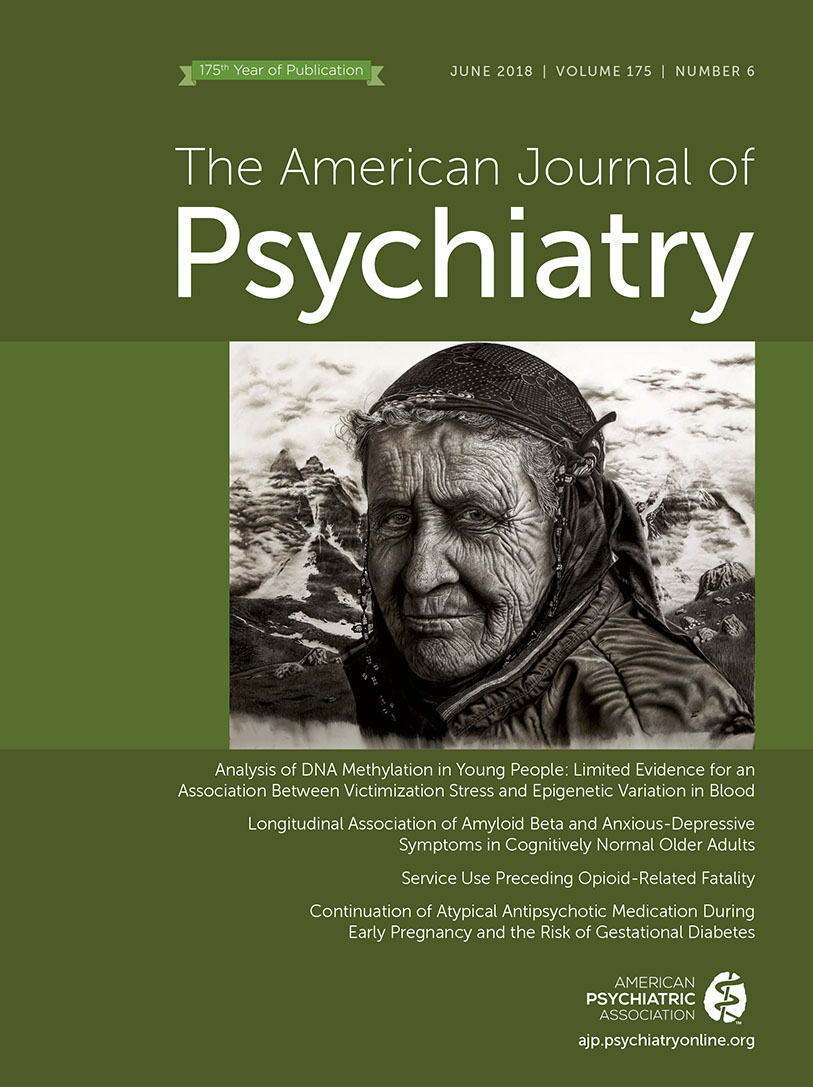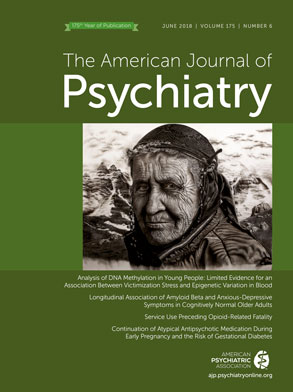175 Years of Progress in PTSD Therapeutics: Learning From the Past
Abstract
Tell me, sweet lord, what is’t that takes from theeThy stomach, pleasure and thy golden sleep?Why dost thou bend thine eyes upon the earth,And start so often when thou sit’st alone?Why hast thou lost the fresh blood in thy cheeks;And given my treasures and my rights of theeTo thick-eyed musing and curst melancholy?In thy faint slumbers I by thee have watch’d,And heard thee murmur tales of iron wars;Speak terms of manage [horsemanship] to thy bounding steed;Cry ‘Courage! to the field!’ And thou hast talk’dOf sallies and retires, of trenches, tents,Of palisadoes, frontiers, parapets,Of basilisks, of cannon, culverin,Of prisoners’ ransom and of soldiers slain,And all the currents of a heady fight.Thy spirit within thee hath been so at war,And thus hath so bestirr’d thee in thy sleep,That beads of sweat have stood upon thy browLike bubbles in a late-disturbed stream;And in thy face strange motions have appear’d,Such as we see when men restrain their breathOn some great sudden hest. O, what portents are these?
The ERA Prior to DSM
Terminology and Definitions
World War II: Descriptions of Treatments and Outcomes
Group therapy also implies a distinction in treatment, the introduction of a didactic element. Many psychiatrists, far from scouting this, would affirm that the power of the intellect has not received sufficient respect in psychotherapy and that it should be more fully exploited…. It was pointed out how nervousness meant feelings, how feelings in wartime meant chiefly fear, how fear prepared the body for defense against attack, and how fear set the adrenalin mechanism governing. Thus analyzed as a physiologic defense apparatus, fear lost much of its implication of moral cowardice for the men, and became acceptable in their minds. (12, p. 128)
War pressures have forced us all into the search for time-saving techniques in psychotherapy. It was natural in this dilemma that among other therapeutic agents we should seek also greater help from drugs.…From a review of the literature, as well as from our clinical experience, we have concluded that there are three principal methods of attacking the pathology and therefore the symptomatology with drugs. The object, no matter what the means, is to enable the patient to face his traumatic experience and to uncondition him to it.The three methods of attack are 1) use of sedatives to secure rest; 2) use of intravenous barbiturates to promote mental catharsis, thereby assisting in the recall of a suppressed episode; 3) use of drugs acting directly on the autonomic nervous system. (13, p. 355)
Several factors contribute to the persistence and intensification of the fear response to the one or more traumatic experiences. The threat to life results in markedly increased production of epinephrine (physiologic response to fear), which causes the physical symptoms described below and also increases irritability to external stimuli. Due to this state of irritability, milder or ordinarily ineffective stimuli result in the liberation of still more epinephrine. Resultant physical symptoms also serve to further increase fear so that both external and internal stimuli act to continue and increase the reaction. (13, p. 355)The dynamic force is a continuing stimulus at the cortical level in the form of the memory of the traumatic experience. This reaction to his memory is of course fear, with stimulation of the lower autonomic centers. (13, p. 356)
World War II: Sodium Pentothal and Other Approaches to Facilitating Psychotherapy for PTSD
In the treatment of battle reactions narcosynthesis possesses considerable advantage over ordinary sedation. While both reduce sympathetic overactivity, the narcosynthesis permits mental catharsis at the same time. Unconditioning is therefore hastened by the fact that revelation of the traumatic incident does not produce the usual great discomfort. (13, p. 357)
With these well known concepts in mind we feel that successful treatment must be directed essentially toward reconditioning the patient to the traumatic episode so that exposure to it does not produce the great autonomic imbalance.… Drug therapy, in order to be successful, must be directed toward correction of these specific alterations of physiology, thereby making more rapid reconditioning possible. Specific therapy saves time and discouragement in contrast to hit and miss therapy. (13, p. 356)
World War II: Deconditioning and Other Precursors of In Vivo Exposure Therapy for PTSD
In this connection we have used a short movie of an actual torpedoing to great advantage. (13, p. 358)Audio-visual aids—motion pictures—are extremely useful adjuncts to group treatment and training. (19, p. 496)
Briefly, films of actual combat scenes, graded in order of intensity of stimulation are shown, followed or accompanied by a record of battle sounds. (20, p. 498)When the technique of group discussion has been established, actual combat films of bombings, strafings, and some captured Japanese films are shown with the battle sounds.… After these films, pulses and blood pressures are taken. This is followed by group discussion with the psychiatrist acting as a moderator.… Patients are given simple explanations of the conditioned reflex illustrated by Pavlov’s experiments with dogs. (20, p. 499)
World War II: Tenets of Military Psychiatry—Immediacy, Proximity, and Expectancy
[T]he keynote of treatment of all acute neuroses is promptness, and the longer the delay in treatment, the less chance is there of a patient returning to duty or of regaining his former state of health. (23, p. 600)Forward treatment was first tried out in this war by Brigadier James and Major Palmer during the N. Africa campaign and a ward of 100 beds was set aside for psychiatric cases.… The average length of stay in hospital was under one week and the percentage of those returning to duty was quite high. (23, p. 602)For the anxiety cases or those suffering from severe exhaustion resulting from fatigue and battle stress, continuous narcosis is the method of treatment. By this means, the patient is cut from all external stimuli, the memory of the battle experience is removed and the patient is given complete rest of mind and body. He should be nursed in a quiet darkened room, and owing to the shortage of single rooms for this purpose in this hospital, small dormitories are set aside where 4 or 5 patients can be treated together.… The hours of sleep are recorded on a chart and the aim should be to keep the patient asleep for about 20 hours out of the 24. The treatment may be continued from 3 to 12 days. (23, pp. 602–603)In wartime there is little time for detailed psychotherapy to unearth conflicts and short cuts to this end are necessary. (23, p. 604)
World War II: Introduction of Hypnosis to Treatment
The authors contacted by letter 178 of the 240 veterans they had treated during the first year, with 83 veterans responding (26). Among the 83 respondents, 55% had improved.During the first year of operation (July 1, 1944 to July 1, 1945) …we treated about 240 veterans of World War II who had been discharged because of neuropsychiatric disabilities. Psychotherapy, usually weekly interviews, was often supplemented by group therapy, pentothal and by social and environmental “therapy,” including coordination with various community resources. (26, p. 259)
Intense anxiety, recurrent battle dreams, startle reaction to sudden or loud noises, tension, depression, guilt, and a tendency to sudden, explosive, aggressive reactions… a tendency to avoid people, fear of exposure to any type of criticism, difficulty in making decisions, and various types of sleep disturbances. (27, p. 401)
Upon his return to civilian life the patient constantly re-experiences the feelings engendered in combat. The threat of annihilation and destruction that was very real and imminent under combat conditions is carried over into civilian life.… Thus the patient reacts to seemingly minor stimuli and seemingly innocuous situations in civilian life as if he were still under combat conditions. (27, p. 401)
[I]t is apparently necessary to have a combination of accidental circumstances superimposed upon a receptive soil in order to precipitate an overt, chronic traumatic war neurosis. (27, p. 402)Because of the importance of the establishment of a firm, deep relationship between patient and therapist, the use of intravenous narcosis and hypnosis has gradually diminished in our clinic. We have found that abreaction of traumatic events occurs without intravenous narcosis or hypnosis in the course of regular interviews. (27, p. 405)
Korean War: Advances in Combat Psychiatry
Perhaps one of the greatest difficulties in combat psychiatry lies within the physician himself, and this difficulty increases with his personal distance from combat. The physician is the victim of his own attitudes, motivations for the practice of medicine, training, and ego ideal.… It is easier to say, “This man should never have been drafted,” than to help him adjust to his duties. It is easier to send a frightened young soldier, who reminds one of one’s self or one’s own son, to the rear than to return him to combat duty.… One’s own feelings of guilt over returning another to combat duty, more dangerous and arduous than one’s own duty, make it difficult for the psychiatrist to function effectively and without anxiety. It is quite necessary that the psychiatrist work these things through so that he may effectively and happily carry out his chosen work—or the work that has been chosen for him. (28, p. 253)It may seem unkind to require further duty of a person who is anxious and uncomfortable, but the greatest psychiatric mishandling, and the greatest possible unkindness, is the medical evacuation of a patient who has not yet performed with the degree of honor required of him by both his superego and the community as he sees it, aiding him to burn his bridges behind him and making his guilt irrevocable. (28, p. 254)
Vietnam War: Combat Psychiatry in the Face of Overwhelming Mental Health Needs
A combat soldier who breaks down in battle or a noncombat soldier who develops symptoms in an outlying area is taken to the nearest of these outposts, where one of the specially trained medics ministers to him. He usually takes him to a quiet place, urges him to review the traumatic events, reassures him, lets him sleep overnight after a hot meal when possible, recommends medications to the general medical physicians there when appropriate, and then returns the man to duty the next morning. (29, p. 290)
Rape Trauma Syndrome
The DSM ERA of treatment of PTSD
Development of Trauma-Focused Psychotherapies for PTSD
Health Service Delivery for PTSD
Pharmacotherapy for PTSD
Combination Pharmacotherapy and Psychotherapy
Treatment Guidelines
Future Directions for PTSD therapeutics
Footnote
References
Information & Authors
Information
Published In
History
Keywords
Authors
Metrics & Citations
Metrics
Citations
Export Citations
If you have the appropriate software installed, you can download article citation data to the citation manager of your choice. Simply select your manager software from the list below and click Download.
For more information or tips please see 'Downloading to a citation manager' in the Help menu.
View Options
View options
PDF/EPUB
View PDF/EPUBLogin options
Already a subscriber? Access your subscription through your login credentials or your institution for full access to this article.
Personal login Institutional Login Open Athens loginNot a subscriber?
PsychiatryOnline subscription options offer access to the DSM-5-TR® library, books, journals, CME, and patient resources. This all-in-one virtual library provides psychiatrists and mental health professionals with key resources for diagnosis, treatment, research, and professional development.
Need more help? PsychiatryOnline Customer Service may be reached by emailing [email protected] or by calling 800-368-5777 (in the U.S.) or 703-907-7322 (outside the U.S.).

